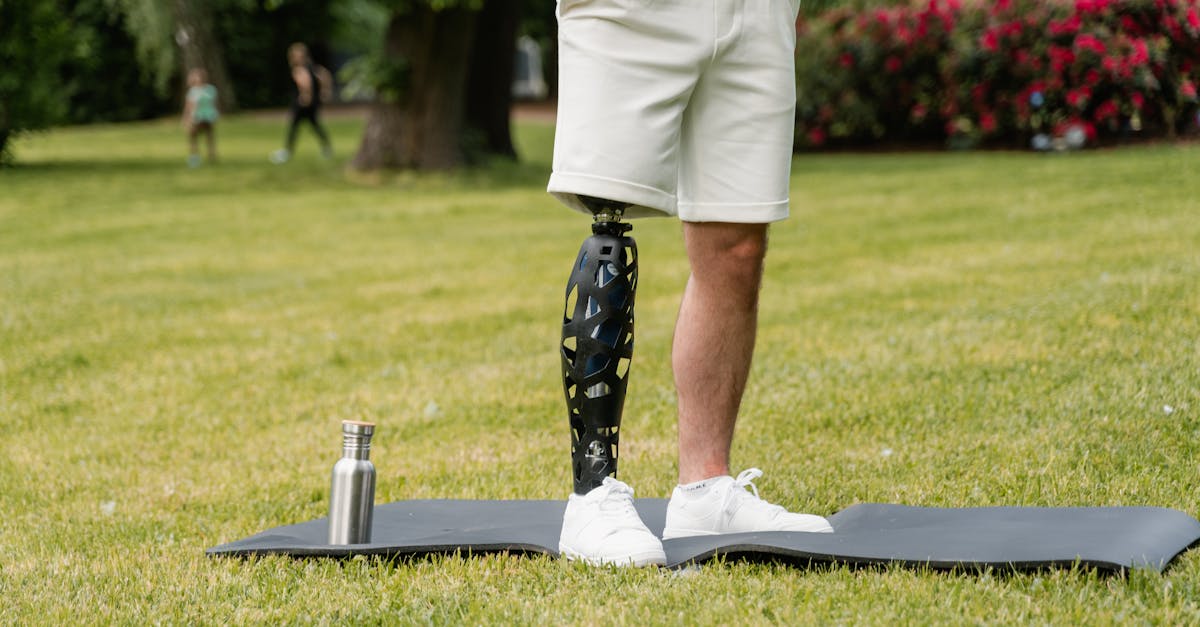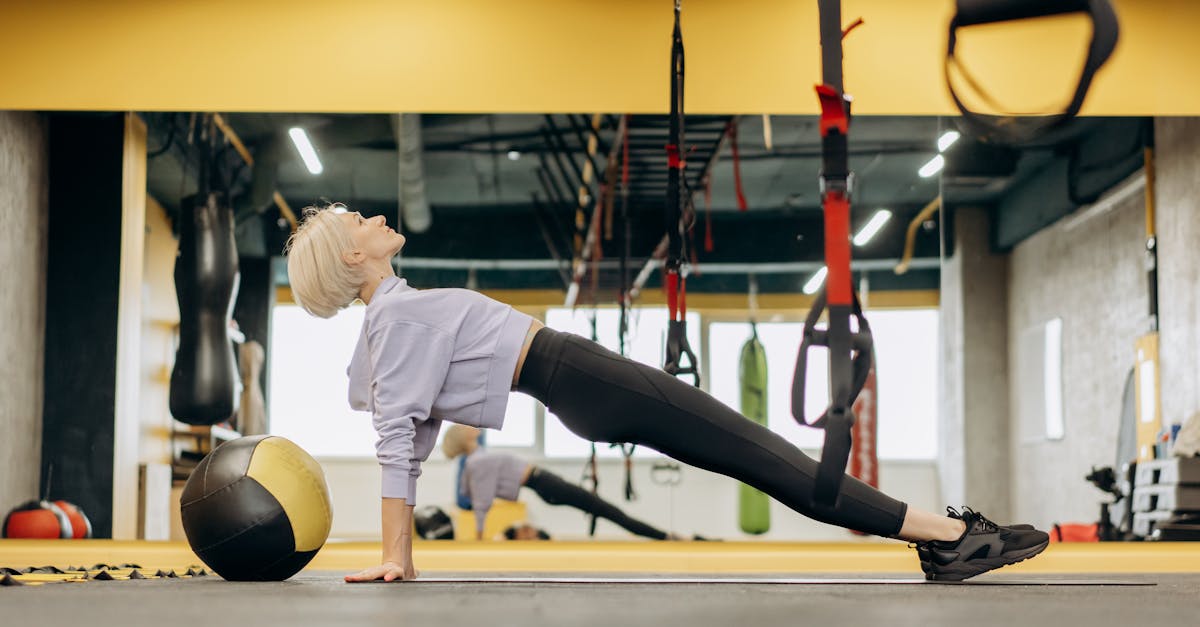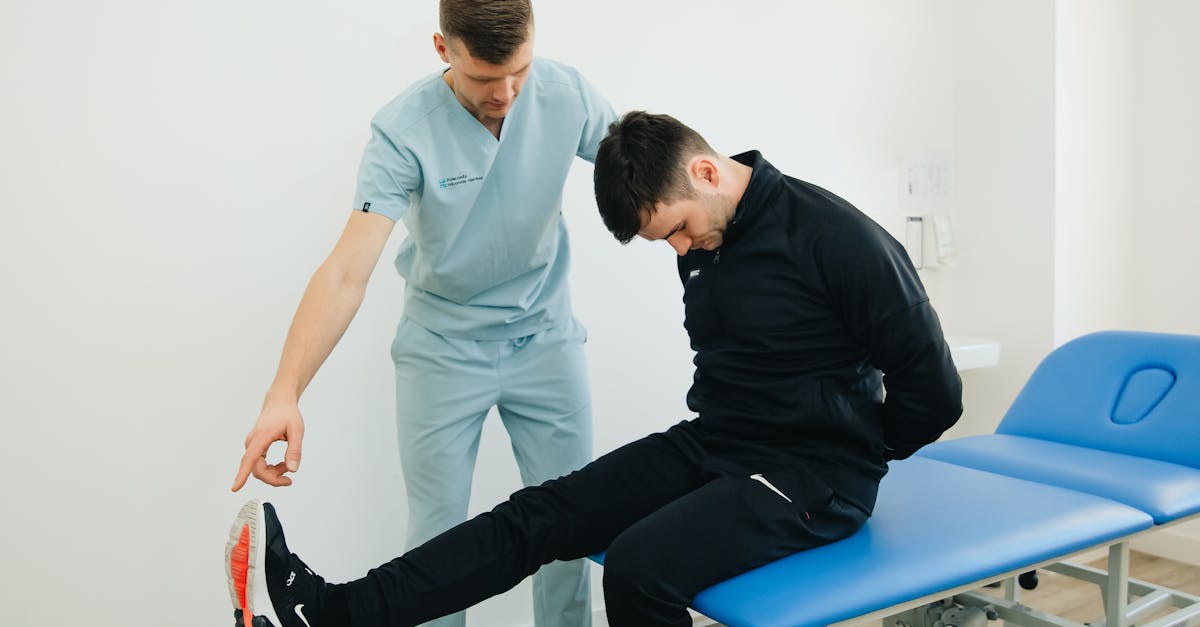|
In Short, strengthening core stability is a critical approach for alleviating sciatica pain that involves enhancing the muscles around the spine and pelvis. This method promotes stability and reduces strain on the sciatic nerve, providing significant relief for those affected. By focusing on exercises designed to improve core strength, individuals can experience increased mobility and decreased pain levels. Utilizing specific routines such as bridging or plank exercises, this practice effectively supports the body’s alignment and enhances overall physical function. |
Sciatica often results from issues related to core stability, which play a crucial role in alleviating pain and preventing recurrences. Strengthening the core muscles provides better support for the spine, helping to relieve pressure on the sciatic nerve. Effective exercises include planks, bridges, and various stretching routines. These movements promote flexibility and stability, which can significantly enhance overall functional capacity and encourage a healthier lifestyle.

Welcome to Pulse Align: Your Path to Recalibrating Wellness
Discover the innovative and gentle approach at Pulse Align, where we assist clients in restoring their body’s natural balance and posture through subtle, imperceptible pulses. This non-invasive method supports muscle tone symmetry, often leading to improved overall well-being and minimized tension in muscles and joints.
Natural Balance and Comfort
At Pulse Align, our focus is not on discomfort or specific conditions, but rather on how the body can naturally recalibrate itself. By promoting muscle tone symmetry, our method often results in enhanced comfort and posture. Clients experience a sense of improved alignment, helping them feel more at ease in their everyday activities.
A Personalized Approach to Wellness
Our approach is highly personalized, tailored to meet the unique needs of each client. Many have shared testimonials describing their satisfying journeys, noting notable improvements in neck and back tension and overall wellness. Clients enjoy the family-friendly environment, making Pulse Align a perfect choice for everyone, including children and expectant mothers.
Explore Your Wellness Journey with Pulse Align
Ready to take the next step? We invite you to explore the Pulse Align website to learn more about our services, find nearby locations, and book a consultation for yourself or your loved ones. With clinics situated in La Prairie, Mont-Royal, Terrebonne, and several other key areas, we’re accessible to our community. Remember, Pulse Align complements your healthcare practices, promoting an empowered journey towards achieving balance and well-being—naturally!
Visit us today at Pulse Align, and let’s embark on this journey together!
Medical Disclaimer
The information and advice provided on this site do not replace the advice, diagnosis, or treatment of a healthcare professional. Pulse Align complements, but does not replace, medical care. Clients should remain under the supervision of their healthcare team for any medical condition.
Core Stability Exercises for Sciatica Relief
- Bridging: Lying on your back, lift your hips while keeping your knees bent.
- Plank: Engage your core while maintaining a straight line from head to heels.
- Bird Dog: Extend opposite arm and leg while on hands and knees to enhance stability.
- Cat-Cow Stretch: Alternate between arching and rounding your back for flexibility.
- Knee to Chest Stretch: Pull one knee towards your chest to release lower back tension.
- Side Plank: Strengthen obliques while stabilizing the entire core.
- Dead Bug: Lie on your back, move opposite limbs while keeping core engaged.
- Pelvic Tilts: Gently arch and flatten your lower back to strengthen core control.

Understanding Sciatica and Core Stability
Sciatica is a condition resulting from irritation of the sciatic nerve, often leading to pain radiating from the lower back through the hips and down the legs. To mitigate sciatica pain, one effective approach is to enhance core stability. Strengthening the core not only alleviates symptoms but also significantly contributes to overall spinal health and posture. This article will explore various strategies to strengthen core stability for those suffering from sciatica.
Importance of Core Stability
Core stability refers to the ability of the muscles in your abdomen, lower back, hips, and pelvis to work together to support your spine. A strong core can alleviate stress on the spine and the surrounding nerve structures, which are often compromised in individuals with sciatica. Enhancing core stability can not only reduce pain but also prevent recurrences, making it a crucial component of sciatica management.
Exercises to Strengthen Core Stability
There are several effective exercises that can strengthen core stability and target the muscles that support the spine. Here are a few:
1. The Bird Dog: This exercise strengthens both the core and back extensors. Start on your hands and knees, engage your core, extend one arm forward and the opposite leg back simultaneously. Hold for a few seconds before returning to start and switch sides.
2. Plank Variations: Planking is a powerhouse of an exercise that not only works the abdominal muscles but also supports the lower back. Begin with the standard plank, ensuring your body forms a straight line from head to heels. Alternatively, try side planks to target the obliques.
3. Bridges: This simple yet effective exercise engages the glutes and core. Lie on your back with knees bent, feet flat on the ground. Raise your hips toward the ceiling, hold for a moment, and lower back down. Repeat several times for maximum benefit.
Core Stability Principles for Sciatica Relief
Strengthening the core should not solely focus on traditional ab workouts. It is vital to incorporate stability exercises that promote balance and control. Exercises that require you to engage and stabilize your core while in motion are particularly effective.
1. Seated Leg Lifts: While seated, lift one leg off the ground while maintaining an upright posture. This engages your core while promoting balance and stability in the pelvis.
2. Pilates and Yoga: Both disciplines emphasize core strength and stability through controlled movements and breathing. Specific poses and sequences can bridge the gap between strength and flexibility, which is essential for sciatica relief.
Exercises to Avoid
While many exercises can enhance core stability, it is equally important to know what to avoid to prevent aggravating sciatica symptoms. High-impact activities, heavy weightlifting, and exercises that require excessive bending or twisting can often exacerbate pain. Listening to your body and prioritizing low-impact, stability-focused movements is key.
Pro Tip: Always consult with a healthcare provider or a physical therapist before starting any exercise regimen, especially if you’re dealing with sciatica.
Embracing a Holistic Approach
Incorporating core stability exercises into your routine is only one part of a comprehensive strategy for managing sciatica. It is essential to adopt a holistic approach that includes posture awareness, regular physical activity, and mindfulness practices to support optimal neuromuscular health. By aligning with principles that prioritize health, balance, and recovery, individuals can enhance their quality of life while effectively managing sciatica symptoms.
Sciatica: Strengthening Core Stability
| Focus Area | Description |
| Core Strengthening | Enhancing stability through tailored exercises promotes an overall sense of wellness. |
| Alignment | Practicing alignment techniques may support natural body recalibration, fostering balance. |
| Flexibility | Incorporating stretches can improve flexibility, helping to maintain mobility and comfort. |
| Isometric Exercises | Engaging in isometric exercises can build stability without excessive strain on the body. |
| Functional Movements | Integrating daily functional movements supports holistic wellness and practical strength. |
| Breath Control | Focusing on breath can enhance engagement in exercises and promote relaxation. |
| Posture Awareness | Being mindful of posture during activities contributes to overall body balance. |
| Active Rest | Incorporating active rest methods can aid recovery while promoting ongoing engagement. |
| Neuromuscular Coordination | Practicing exercises that improve coordination can enhance overall movement efficiency. |
| Overall Well-being | Focusing on core stability can lead to improved wellness and a renewed sense of vitality. |

Discovering Balance: Client Journeys to Wellness through Core Stability
Clients from diverse regions such as La Prairie, Mont-Royal, and Terrebonne have shared transformative experiences through Pulse Align’s holistic approach to scatica. Many express how the focus on strengthening their core stability has not only alleviated discomfort but also enhanced their overall sense of well-being. By integrating targeted exercises and stretches designed for the unique needs of each individual, clients find that their bodies naturally recalibrate, leading to lasting improvements.
In Chicoutimi, a client noted, “After starting the program, I noticed a significant reduction in my pain levels. The tailored exercises helped me reclaim activities I thought I had lost for good.” This sentiment is echoed by those in Charlesbourg and Deux-Montagnes, where individuals report feeling empowered to engage more fully in their daily lives without the overshadowing concern of sciatica.
The feedback from clients in Sainte-Marie emphasizes how critical it is to receive support from a team that understands the interconnectedness of the body. “The team at Pulse Align worked alongside my healthcare providers, ensuring my recovery was aligned with my overall health goals,” a resident from Saint-Jérôme remarked. This comprehensive collaboration not only fosters individual growth but also builds a supportive community around wellness.
Furthermore, clients from Châteauguay and Panama City have expressed a shared appreciation for the targeted strategies used to alleviate their pain naturally. Many have discovered that what may have felt insurmountable is now manageable—thanks to the invigorating practices that prioritize harmony and balance.
As clients in these vibrant areas continue to seek out wellness and improved body function, they find solace in Pulse Align’s commitment to supporting each individual’s journey. Together with their healthcare teams, Pulse Align fosters an environment where recovery isn’t just a destination—it’s a fulfilling journey marked by strength, resilience, and a renewed connection to self.
To learn more about how Pulse Align can aid your healing process and help enhance overall well-being, explore Our Clinics to find a location near you.
Sciatica: Strengthening Core Stability
Sciatica, a condition arising from irritation or compression of the sciatic nerve, is characterized by pain that radiates from the lower back through the hip and down the leg. It often stems from underlying issues such as herniated discs, spinal stenosis, or injuries that impact the lumbar region. To effectively combat the debilitating effects of sciatica, it is essential to focus on strengthening core stability. This approach not only aids in pain relief but also plays a critical role in preventing future episodes of discomfort.
Dr. Sylvain Desforges, an expert in osteopathy, naturopathy, and manual medicine, understands the challenges faced by those afflicted with sciatica. As the founding president of TAGMED clinics and the ACMA association, he has dedicated his career to healthcare innovation. Dr. Desforges specializes in chronic pain management, integrating advanced technologies like spinal decompression, laser, and shockwave therapy into his practice. His mission is to provide evidence-based care that optimizes his patients’ health and well-being.
One of the key components in alleviating sciatica pain involves focusing on core stability. The core muscles, which include the abdominal muscles, back muscles, and the pelvic floor, play a vital role in maintaining proper posture and balance. When these muscles are weak, it can lead to improper alignment of the spine, increasing the risk of nerve compression and resulting pain. Therefore, engaging in core-strengthening exercises becomes essential in managing sciatica.
Safe and effective core exercises for sciatica relief can encompass a variety of movements that promote stability and strength. For instance, bridging exercises involve lying on the back with knees bent and feet flat on the ground, then slowly lifting the hips while engaging the abdominal muscles. This exercise not only strengthens the core but also extends the spine, providing relief for the sciatic nerve. Similarly, the bird-dog exercise, which entails balancing on hands and knees while extending one arm forward and the opposite leg back, encourages core activation while also improving balance and coordination.
Patients are often encouraged to avoid certain exercises that could exacerbate sciatica symptoms. Movements that involve heavy lifting, twisting, or bending inappropriately may lead to increased pain and discomfort. Dr. Desforges advocates for a tailored exercise program designed to target the specific needs of each individual, ultimately guiding them towards safe and effective routines.
In addition to exercise, Dr. Desforges emphasizes the importance of holistic approaches in managing sciatica. Techniques such as manual therapy can help ease muscle tension and improve alignment. Furthermore, incorporating practices like yoga and pilates enhances flexibility and strengthens the core, promoting a well-rounded approach to pain management.
By prioritizing core stability and advocating for tailored exercise regimens, patients are empowered to take control of their recovery journey. Moreover, the synergy of Dr. Desforges’ expertise and the advanced technologies available at TAGMED clinics ensures that individuals experiencing sciatica receive comprehensive care. This approach fosters long-term well-being and aids in reclaiming an active, fulfilling lifestyle.
Neurovertebral Decompression Technology by TAGMED
Mechanism of Action
The neurovertebral decompression method proposed by TAGMED operates by applying a carefully controlled and progressive traction force to the spine. This technique expands the space between the vertebrae, effectively reducing the pressure on intervertebral discs and nerve roots. As a result, this approach enhances fluid circulation in the targeted area. This improved circulation plays a pivotal role in diminishing inflammation and alleviating pain associated with chronic conditions such as disc herniation, disc bulges, spinal stenosis, and foraminal stenosis. By precisely targeting the structural issues within the spine, TAGMED’s technology facilitates a healing environment that promotes recovery.
Specific Advantages
This non-invasive method serves as an effective means of relieving chronic pain and associated symptoms related to the conditions discussed in “Sciatica: Strengthening Core Stability.” By decreasing the pressure exerted on nervous structures and optimizing fluid circulation around the discs, this technique encourages a more rapid recovery and enhances overall quality of life for a diverse range of patients. The reduction in pressure not only alleviates discomfort but also has a long-term positive impact on mobility and functional capabilities, allowing patients to return to their daily activities with greater ease.
Comparison with Other Treatments
When compared to other commonly used therapeutic approaches for managing the aforementioned conditions, such as analgesics, corticosteroid injections, traditional physical therapy, and surgical interventions, TAGMED’s neurovertebral decompression showcases unique advantages. Unlike pharmacological methods, which may carry the risk of dependency and adverse effects, TAGMED’s approach is non-invasive, significantly reducing potential complications. Furthermore, patients typically experience a quicker recovery period, allowing them to get back to their regular routines faster than with surgical or other invasive treatments.
Case Studies and Testimonials
Numerous patients have reported substantial benefits from undergoing TAGMED’s neurovertebral decompression treatment for their chronic pain and associated symptoms. Testimonials highlight marked improvements, including a lasting decrease in pain and a swifter return to everyday activities. Many have experienced a noticeable reduction in their reliance on pharmacological treatments, underscoring the effectiveness of this innovative approach. For instance, individuals who were once limited in their mobility now report improved functioning and enhanced participation in social and physical activities. This not only restores their sense of normalcy but significantly elevates their overall quality of life.
By emphasizing these key points, it becomes evident that neurovertebral decompression is a promising alternative for individuals grappling with chronic pain conditions, providing an effective solution that stands apart from traditional treatment methods.
Sciatica: Strengthening Core Stability
Sciatica is a common condition affecting many individuals, often resulting in pain that radiates along the path of the sciatic nerve. This discomfort can significantly hinder daily activities and overall quality of life. One effective method to alleviate the symptoms is through strengthening core stability.
Core stability is crucial as a strong core supports the spine and can reduce the strain on the lower back. When the core muscles are well-conditioned, they help maintain proper posture and alignment, lessening the risk of exacerbating sciatica pain. Engaging in specific exercises designed to enhance core strength not only aids in pain relief but also helps in preventing future occurrences.
Several core and stability exercises can be beneficial for those experiencing sciatica. Movements such as bridging, planks, and bird-dog encourage proper alignment and engage multiple muscle groups effectively. These exercises focus on improving muscular balance and coordination, which can be vital for individuals suffering from hip and lower back pain.
Additionally, extension exercises that incorporate gentle stretches can aid in alleviating nerve compression. Maintaining flexibility in the hips and lower back through targeted stretching routines can enhance mobility and reduce stiffness, thereby supporting the overall health of the sciatic nerve.
Ultimately, embracing a regular exercise routine geared toward strengthening core stability holds promising potential for managing sciatica symptoms. By prioritizing core strength, individuals affected by sciatica can reclaim their mobility and independence, fostering a healthier, more active lifestyle.

Do you suffer from a chronic condition that responds little or not at all to conservative treatments?
At Pulse Align, we embrace a non-invasive and innovative approach designed to help clients restore their body’s natural balance and posture through gentle, imperceptible pulses. By focusing on recalibrating muscle tone and facilitating improved alignment, clients can experience a natural reduction in muscle and joint tension. This method emphasizes a holistic view of well-being, encouraging clients to engage with their body’s own healing processes.
Our philosophy at Pulse Align is rooted in the belief that discomfort or imbalance does not need to be the center of attention. Instead, our methods help the body recalibrate itself naturally, allowing clients to rediscover comfort in their daily activities. Through this gentle approach, many have reported amazing improvements in their overall posture and well-being, contributing to a more fulfilling lifestyle.
Every client’s journey at Pulse Align is unique, and our personalized approach is structured around individual experiences and needs. We value the heartfelt testimonies from our clients, many of whom have shared their positive transformations in neck and back tension, overall wellness, and the newfound ease with which they interact with life. Our commitment to a supportive environment fosters a place where each client’s voice is heard, and their aspirations for improved symmetry in muscle tone are achieved.
We invite you to explore our services at Pulse Align, where families are always welcome. From locations in La Prairie, Mont-Royal, Terrebonne, and beyond, our experienced team is dedicated to enhancing your journey towards wellness. With our safe, non-invasive methods, Pulse Align works alongside your healthcare services as a complementary option for those looking to embrace a holistic approach to health. To learn more about our offerings and to book a consultation for yourself or your family, visit our website at Pulse Align. Your path towards natural balance and improved muscle symmetry starts here.
Frequently Asked Questions
Low Back Pain, sciatica
- Is physical therapy effective for sciatica?Yes, a therapist provides exercises, stretches, and manual techniques to relieve pain and restore mobility.
- Does the abdominal core matter?A strong core supports the spine and reduces stress on the lumbar area, preventing pain.
- What is low back pain?It’s pain localized in the lower back, around the lumbar vertebrae.
- Does meditation help manage pain?Yes, meditation reduces stress and pain perception, aiding in coping with pain.
- Should I avoid twisting with sciatica?Avoid sudden twists or deep bends until pain improves.
- Is walking recommended for low back pain?Yes, gentle walking improves circulation, releases tension, and aids recovery.
- Does acupuncture help?Some find pain relief with acupuncture, but effectiveness varies by individual.
- When should I see a doctor for low back pain or sciatica?If pain lasts more than a few weeks, worsens, or is accompanied by loss of bladder control or other severe symptoms.
- Do lumbar herniated discs heal?Often, the herniated fragment partially reabsorbs over time, and symptoms lessen.
- How do I differentiate low back pain from sciatica?Low back pain is limited to the lower back, while sciatica radiates into the buttock, leg, and sometimes the foot.
Louise Rousseau knows the toll low back pain can take on daily life—from struggling to tie your shoes to missing out on cherished activities. As a Low Back Pain Awareness Advocate at Pulse Align, Maryse blends compassion with the latest insights in pain relief to offer readers a trusted roadmap toward recovery. Her writing is shaped by heartfelt understanding and grounded in research, empowering others to navigate their own healing journeys. By fostering open dialogue and advocating for accessible solutions, Maryse champions a community where no one’s voice—or hope—is lost to pain.
Medical Disclaimer
The information and advice provided on this site do not replace the advice, diagnosis, or treatment of a healthcare professional. Please note that the author of this article is neither a doctor nor a specialist in a medical specialty as defined by the Collège des médecins du Québec. Manual medicine, functional medicine, and sports medicine as described on this site exclude any medical treatment or diagnosis made by a doctor or medical specialist. Always consult your doctor for any medical questions. For more details, please read our complete Legal Notice.
References
- AlBahel, F., Hafez, A. R., Zakaria, A. R., Al-Ahaideb, A., Buragadda, S., & Melam, G. R. (2013). Kinesio taping for the treatment of mechanical low back pain. World Appl Sci J, 22(1), 78–84. https://www.researchgate.net/profile/Ashraf-Hafez-3/publication/328275215_Kinesio_Taping_for_the_Treatment_of_Mechanical_Low_Back_Pain/links/5c6751e192851c1c9de4567b/Kinesio-Taping-for-the-Treatment-of-Mechanical-Low-Back-Pain.pdf
- Luz, M. A., Sousa, M. V., Neves, L. A., Cezar, A. A., & Costa, L. O. (2015). Kinesio Taping® is not better than placebo in reducing pain and disability in patients with chronic non-specific low back pain: a randomized controlled trial. Brazilian Journal of Physical Therapy, 19(6), 482–490. https://www.scielo.br/j/rbfis/a/pSKxKdvNtdvGqRm55T9rVnS/
- Köroğlu, F., Çolak, T. K., & Polat, M. G. (2017). The effect of Kinesio® taping on pain, functionality, mobility and endurance in the treatment of chronic low back pain: A randomized controlled study. Journal of Back and Musculoskeletal Rehabilitation, 30(5), 1087–1093. https://content.iospress.com/articles/journal-of-back-and-musculoskeletal-rehabilitation/bmr169705
- Artioli, D. P., & Bertolini, G. R. F. (2014). Kinesio taping: application and results on pain: systematic review. Fisioterapia e Pesquisa, 21(01), 94–99. https://www.scielo.br/j/fp/a/LTrVSBPGCpYv7Z9ntV4VpwB/?lang=en
- de Brito Macedo, L., Richards, J., Borges, D. T., Melo, S. A., & Brasileiro, J. S. (2019). Kinesio taping reduces pain and improves disability in low back pain patients: a randomised controlled trial. Physiotherapy, 105(1), 65–75. https://www.sciencedirect.com/science/article/pii/S0031940618301548
- Sarkar, N., Sarkar, B., Kumar, P., Laha, K., & Patel, L. (2018). Efficacy of kinesio-taping on pain, range of motion and functional disability in chronic mechanical low back pain: a randomized clinical trial. International Journal of Health Sciences & Research, 8(7), 105–112. https://www.academia.edu/download/87285818/my_research_on_low_back_pain.pdf
- Kamali, F., Sinaei, E., & Taherkhani, E. (2018). Comparing spinal manipulation with and without Kinesio Taping® in the treatment of chronic low back pain. Journal of Bodywork and Movement Therapies, 22(2), 540–545. https://www.sciencedirect.com/science/article/pii/S1360859217302085
- Chang, N.-J., Chou, W., Hsiao, P.-C., Chang, W.-D., & Lo, Y.-M. (2018). Acute effects of Kinesio taping on pain, disability and back extensor muscle endurance in patients with low back pain caused by magnetic resonance imaging-confirmed lumbar disc degeneration. Journal of Back and Musculoskeletal Rehabilitation, 31(1), 85–93. https://content.iospress.com/articles/journal-of-back-and-musculoskeletal-rehabilitation/bmr169681
- Ogunniran, I. A., Akodu, A. K., & Odebiyi, D. O. (2023). Effects of kinesiology taping and core stability exercise on clinical variables in patients with non-specific chronic low back pain: a randomized controlled trial. Journal of Bodywork and Movement Therapies, 33, 20–27. https://www.sciencedirect.com/science/article/pii/S136085922200122X
- Pakkir Mohamed, S. H., Al Amer, H. S., & Nambi, G. (2023). The effectiveness of Kinesio taping and conventional physical therapy in the management of chronic low back pain: a randomized clinical trial. Clinical Rheumatology, 42(1), 233–244. https://doi.org/10.1007/s10067-022-06352-3




